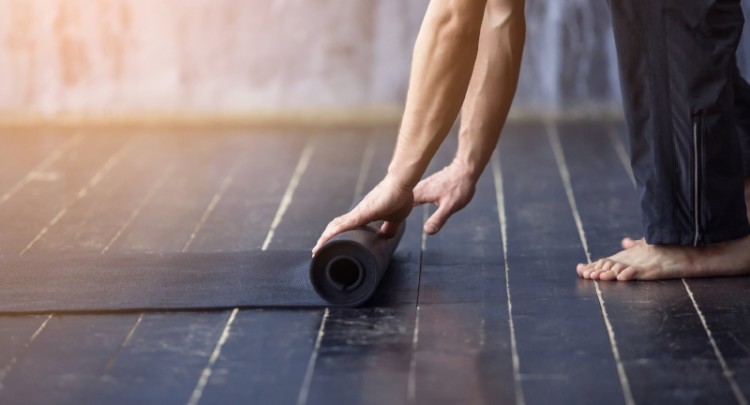This is the second in a series of posts about developing your home fitness space. Stay tuned for more tips, tricks, and tools, and check out our post on foam rollers!
Do you practice yoga, or know someone who does? The answer is probably yes. According to a 2016 Yoga in America study, more than 36 million Americans practice yoga, and practitioners spend upwards of $16 billion per year on related gear. That’s a lot of yoga mats and pairs of stretchy pants!
If you’re new to yoga (or looking to refresh your decades-old gear), a good mat is the most essential investment you can make. However, buying a yoga mat can feel like wandering down the bottled water aisle—there are so many options, they all look similar, and how do you know if one is better than the other?
Luckily, there are many, many high-quality mat options on the market, and your choice actually does matter. Here’s your quick guide to choosing the right one—start with these questions:
What style(s) of yoga are you into?
No matter what type of yoga you practice, there’s a mat out there for you. The perfect mat for a slower, restorative class might not be best for a sweaty vinyasa flow. Check out Outdoor Gear Lab’s breakdown of class types and related mat recommendations. Key considerations include slippage and thickness.
Are you practicing primarily at home or in a studio setting?
This question matters mainly for portability. With a home-based practice, you might prefer a thicker, heavier mat. If you are carrying your mat back and forth to studio classes, you might want to consider lighter, thinner options. Some companies even make travel-specific mats that fold up and pack down into a suitcase! If you want to get really serious, you can purchase mats for each. Also know that most studios rent mats at low or no cost if you forget your own or prefer not to carry it back and forth.
Do you have any injuries or special needs?
Very tall yogis might consider XL mats, like this one from Manduka, which add a foot or more for additional comfort, especially in supine poses. If you have knee injuries or feel like you need extra padding, look into thicker or cushioned mats. Many standard mats are 5mm thick, but you can find a few, like this Hugger Mugger option, that are 6mm or more or made of softer material. Again, these tend to be heavier and less portable, but you’ll be more comfortable while you practice. Also, keep in mind that soft foamy mats aren’t great for balancing poses or intense flows.
How much do you want to spend?
Mat prices vary widely, from under $10 on Amazon to more than $100 from big yoga brands. If you’re newer to yoga and balking at the idea of dropping a lot of cash on a mat, do your research and spend as much as you’re comfortable with on a mat that will meet your needs. There’s some element of “you get what you pay for,” so keep that in mind if you opt for a less expensive option!
Once you’ve invested in a mat, take care of it. This is important for both hygiene and longevity. Spray and wipe down your mat a few times a week (or after practice if you’re sweating a lot) with a DIY essential oil spray. Consider a deeper clean with mild, natural soap and warm water once or twice a month depending on how often you use your mat. Some mats can even go through a washing machine’s gentle cycle. Check specific care instructions from the company before moving forward. Store your mat rolled up or hanging, in mild temperatures, and away from pets, kids, and contaminants.
Whatever you decide, get to your mat often. We recommend a regular CHIYOGAFLOW practice, but any yoga will do!

